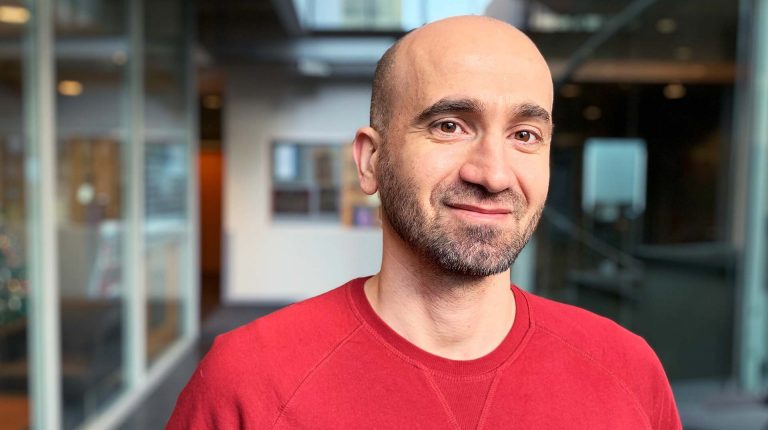Concordia graduate gives the smart grid a security checkup

It’s easy to take the electric power grid for granted, as it runs our laptops and dishwashers with seeming ease.
Yet how will the existing grid — a 60-year-old system, according to the World Economic Forum — keep up with the growing demand of our increasingly power-thirsty, electronic world?
Enter the smart grid.
It’s an intelligent, digitized energy network delivering electricity in an optimal way, from source to consumer. This is achieved by integrating information, telecommunication and power technologies with the existing electricity system.
New sensing technologies and software applications allow for real-time monitoring of the grid, so utility companies can pre-emptively reroute, generate, inject or even store power to avoid outages.
Among other things, the smart grid can incorporate more renewable energy sources — solar and wind power sold back to the grid — for more overall stability and a reduction of carbon emissions.
“The full-fledged smart grid is progressively deployed in Quebec as the existing grid is gradually being upgraded to realize its full potential,” says Bassam Moussa (PhD 18), who conducted his PhD research at the Security Research Centre in the Gina Cody School of Engineering and Computer Science.
Moussa is now continuing his research as a postdoctoral fellow at Thales Research and Technology in Artificial Intelligence eXpertise in Montreal, with a Fonds de recherche du Québec – Nature et technologies scholarship.
“The interconnectedness of the smart grid with the Internet of Things, however, creates new vulnerabilities that require cyber resilience strategies.”
He notes that, ideally, the smart grid should be self-healing from disturbances, operating resiliently against physical and cyberattacks. That necessitates more security.
Synchronization is everything
Moussa’s PhD thesis assessed the security of one of the essential building blocks of the smart grid’s functionality — namely, time synchronization mechanisms. Timestamping facilitates the grid’s monitoring, protection and control on a wide scale.
It’s essential for real-time situational awareness. It’s important after a blackout for post-event analysis, to see what happened, where and when. It’s also important as a predictive tool, for power companies to take pre-emptive measures against outages.
“We’re talking about a margin of error of microseconds. That enables a lot of functionalities. Time synchronization is an immense requirement across the domains of the grid, from generation to transmission, distribution and consumer premises,” says Moussa.
He was funded by Mourad Debbabi’s NSERC/Hydro-Québec/Thales Senior Industrial Research Chair in Smart Grid Security at the Gina Cody School, where Debbabi is associate dean of research and graduate studies.
“We focused on the standardized IEC 61850 substation, another basic block of the smart grid, along with the Precision Time Protocol (PTP) mechanism used to distribute the time signal over the substation’s local area network.”
The smart grid testbed
At the Security Research Centre, Moussa performed his analysis using a smart grid testbed made of real hardware from the field.
In one experiment, he looked at timestamps in voltage and current measurements. Those numbers were fed into algorithms and analyzed to give an indication of the grid’s observability.
To make sense, those measurements need to be timestamped in an accurate manner. This is where time synchronization steps in.
“We managed to manipulate the timestamp for one of those measurements coming from one source, so those measurements became malicious,” says Moussa, who did part of his research during an internship at Hydro-Quebec’s research institute, IREQ.
“By manipulating the timestamp, we ‘poisoned’ the collector so that it drops measurements collected from benign devices and instead gets data from malicious sources.”
Once Moussa determined that the PTP protocol suffers from vulnerabilities, he then proposed solutions.
“I formally defined those solutions to secure this protocol against some synchronization cyberattacks that are crafted for this specific protocol, such as fake timestamps injected through a compromised component and a delay attack, where a PTP packet is captured and held for microseconds, then released, to destabilize the synchronization.”
Moussa likens the smart grid’s time synchronization to the pulse of a human body: “It needs to be in working order for full functionality.”
Concordia’s Security Research Centre
Moussa’s research is one of many Concordia initiatives focused on critical infrastructure security.
The Security Research Centre now has a total of 65 cybersecurity researchers, including 10 professors and more than 55 graduate students and postdoctoral fellows making strides in prevention, detection and mitigation of cyberattacks.
Learn more about the Gina Cody School of Engineering and Computer Science.


